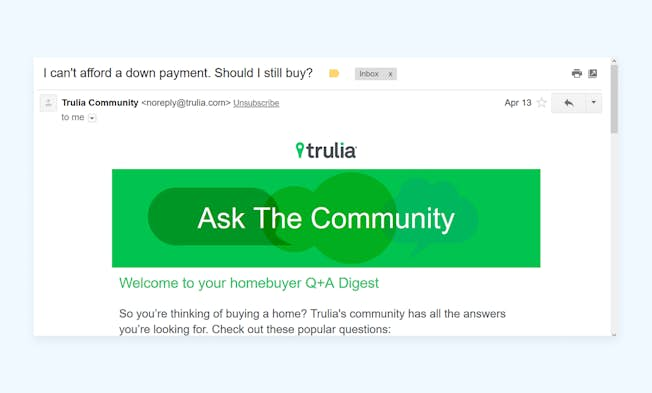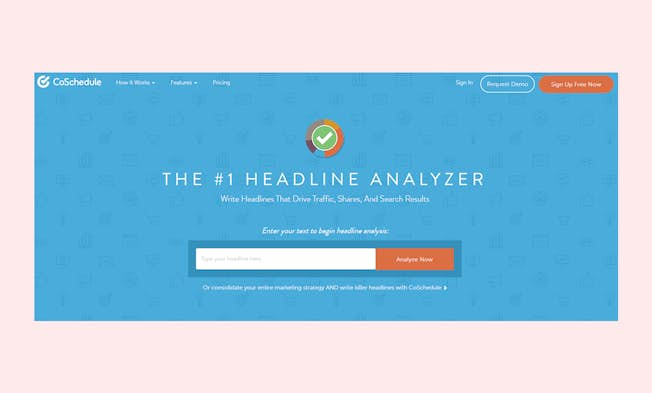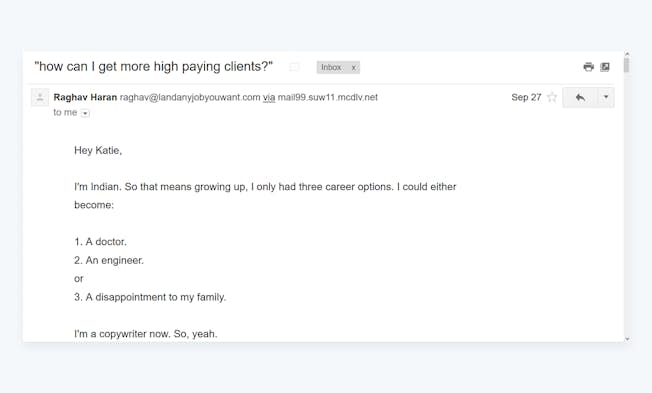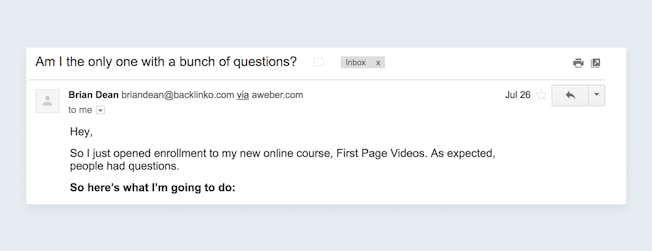Jun 20, 2018
4 Tips for Crafting the Perfect Email Subject Line
A subject line may seem like a minor detail in the overall scheme of your email marketing success but it can make or break an email campaign.
Your emails should focus on adding value to the customer experience, delivering the right message, at the right time. Your content should answer their questions and resolve their 'pain points'. A value-first strategy in your email strategy will lead to increased sales, better brand recognition and higher open rates.
So, don't wait, read our top tips for crafting the perfect subject line and get ready to increase the open rates and ROI of your email marketing campaigns.
1. Stick with the Top-Performers
Whether you’re working for a small business selling custom t-shirts or sitting pretty at a leading, multinational brand, there are a few key best practices for email subject lines that are universal.
- Urgency: Making your subscribers feel like there’s a time crunch can work wonders; however, too many of these can lead to list exhaustion, so use them sparingly.
- Offers: People love new things and experiences, so play on that. Offer them a something free, or give a substantial discount. They’ll see the value in continuing to subscribe to your email list.
Here’s one example of an offer email from Oriental Trading:

- Curiosity: Pique your recipients’ natural curiosity by making them open the email to get more information.
- Self- Interest: Use these subject lines most frequently; they are usually direct and speak to a specific benefit your audience will receive by opening the email. Self-interest subject lines also help pre-qualify openers by hinting at your email’s body content.
This email promises to tell the subscriber the answer to the question in the subject line:

- Use Industry (fashion, tech, etc.) to build authority and keep your open rate high. These work especially well when paired with a curiosity type of statement.
- Tell a Story: Teasing a story in your subject line is a unique way to highlight a benefit and increase open rates.
- Use Social Proof: As humans, we look at what others are doing to justify our own decisions.Leverage this knowledge in your subject lines by mentioning success stories, highlighting how others are using your products or services, or even mentioning familiar names.
By using these tried-and-true tricks, you can ensure your subject lines will get some extra attention. You can even combine two of these tactics for even more email power. Here are some of the best email subject lines for web traffic optimizer brand Sumo as an example.
2. Test, Test and Test Some More
Just following best practices for crafting subject lines isn’t always enough. You still need to test and revise to determine what’s working for your audience. In addition to performing regular A/B testing, you can also test your subject lines before you even send them. CoSchedule offers a free tool that helps you evaluate the power of your headlines, and it works great for subject lines as well. All you need to do is put your subject lines into the analyzer, and you’ll receive a score for how well the subject line/headline is likely to perform.
The program also identifies what types of words you’re using in your proposed headline and how effective these words are at catching the eye of readers or evoking an emotional response.
Feel free to take this advice with a grain of salt – sometimes the tool is too critical of short subject lines that will perform well despite their length. As a second opinion, however, it’s a great option. Don’t forget to ask your team members for their opinions, as well.

3. Pose a Compelling Question
Questions are a great way to get your followers thinking about how they would answer a question (and how you could help them answer it!).
Here’s one example from Raghav Haran.

When you use a question in your subject line that’s relevant to your buyer personas, you pique the individual’s curiosity and make them want to learn more.
And here’s another example from Brian Dean:

Don’t get us wrong; the question mark is often oversold. According to SmartInsights, 72% of brands see a lower click rate – 8.1% lower on average – on subject lines that end with a question mark compared to other punctuation. They might garner more attention, but they perform poorly at triggering real customers.
Yet, the question mark is still on our list. Here’s why: it’s not about what punctuation you use, it’s how you use it. Many brands ask questions that are too generic and don’t relate to their brand. The art of asking a question is to have it be specific about what the copy/products/offer is about. This way, the question in the subject line sets expectations and then meets them. If you do it right, great questions could set you apart from your competition.
4. Use Concise Language, Including Action-Oriented Verbs
Most people scan their inboxes very quickly. That means that the more concise, clear, and action-oriented your subject lines are, the more likely they are to click on your email. When you’re creating a concise subject line, you need to think about how your email will benefit your recipients, and make that benefit clear immediately. For example, “Increase your open rates by 40%” is more compelling than “How to increase open rates.”
Action verbs are important because they inspire people to take action, especially when they’re included at the beginning of the subject line. Here are a few examples from popular brands:
- Pop Physique: “Get Ready. Keep the Pie Off Your Thighs Returns.” (also appeals to self-interest)
- Digital Marketer: “Check out my new “man cave” [PICS]” (also appeals to curiosity)
- Topshop: “Meet your new jeans” (also appeals to self-interest)
Keep in mind that you don’t always have to be super-creative with your subject lines to see a great performance. Actually, straightforward, honest email subject lines actually work really well. Remember to test whatever you create, and don’t forget to bring your team in for a brainstorm. When it comes to creating titles, a team effort can be extremely helpful.
- Categories:
- Articles
- Content Marketing
- Email Marketing
Upgrade to Power Membership to continue
your access to thousands of articles, toolkits, podcasts, lessons and much much more.
Become a Power Member- Login
- View Courses
- - - -
- Courses
- Resources
- - - -
- My Account
- Change Password
- Logout




